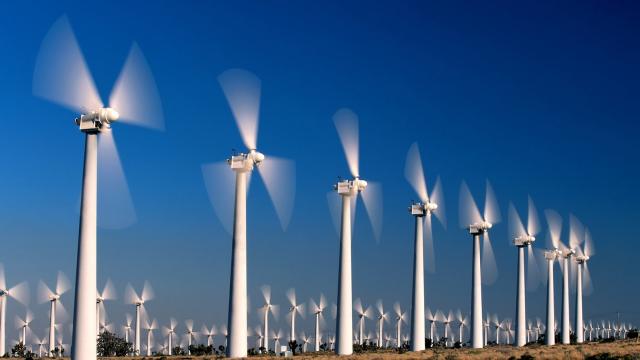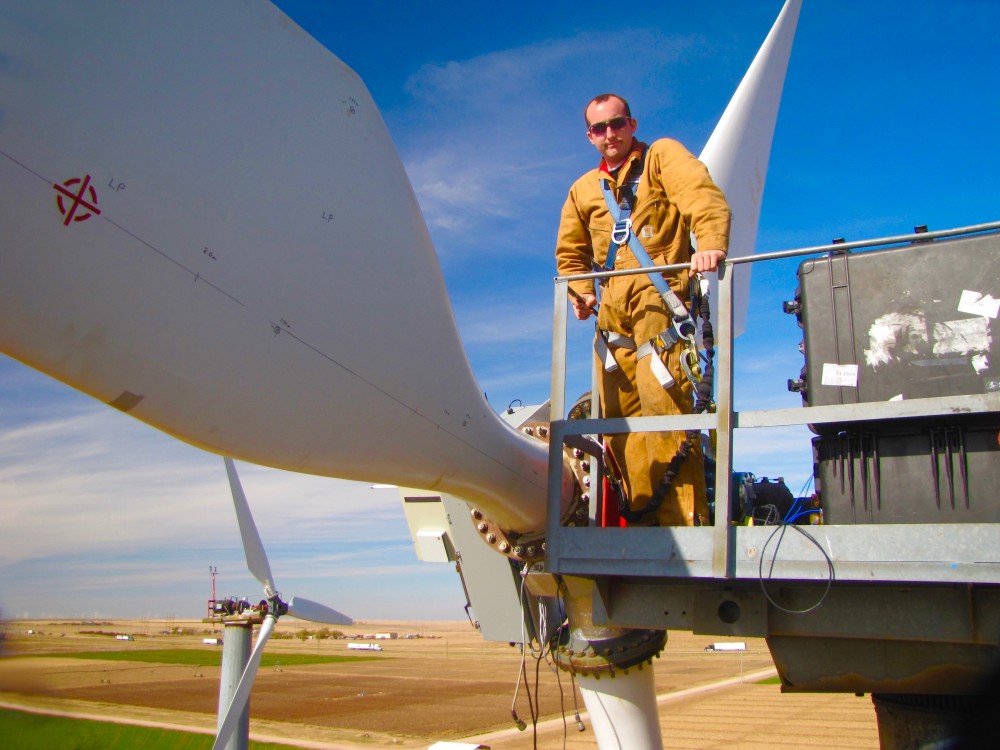
Recall, or imagine, driving on a rural road in Texas and you’re likely to think about oil derricks across open terrain. But with the steep decline in oil prices, fossil fuel-rich Texas can no longer rely simply on gas and oil profits to fuel its economy. As a result, the state has looked to other sources to fill the gap. Namely, wind.
A renewable source of clean energy, wind power is growing and becoming a major energy industry even in areas known as hubs of the fossil fuel industry, like Texas, whose name is included in a moniker for oil: Texas Tea.
In fact, wind is the fastest growing energy industry in the nation, according to the Department of Energy, and accounts for almost 12 percent of electricity in Texas, still below coal but more than nuclear. According to Robert Fares at the University of Texas, wind provided 45 percent of the state’s electricity on Dec. 20, 2015.
“Perhaps the most exciting thing about the latest wind energy record is that it is a small glimpse of what will become commonplace as Texas adds more wind energy – especially in light of the fact that the U.S. Congress just extended the wind energy production tax credit for an additional five years,” Fares wrote on his blog.
Critics Nonetheless Contend that Wind is Not a Reliable Source of Energy.
To be clear, other sources of energy like natural gas are still needed to supplement wind. But in Texas, wind is plentiful during the winter in places like West Texas, while during the summer it is especially strong in the southeast along the Gulf of Mexico. During a heat wave in August 2011, the president of Electric Reliability Council of Texas, which operates the grid covering three-quarters of the state, credited wind energy with keeping the electricity grid operating during high demand.
Even though Texas’s economy has diversified in recent decades, oil still dominates Houston, where three-quarters of the publicly traded companies are oil- and gas-related. A decline in oil prices not only hurts the multinational corporations based there, but the Texas economy overall.
“Energy is only 11 percent of Texas’ economy. But because of multiplier effects, an oil bust can be much larger than that number would suggest," Noah Smith, assistant professor of finance at Stony Brook University, wrote in an op-ed for Bloomberg View last year. "Oil and oil-services jobs tend to be high-paying, and when workers in those industries get fired or take pay cuts, they don’t buy as many goods and services from the local economy. So the pain spreads."
A Benefit of Wind Energy is its Lack of Economic Volatility.
There are further upsides to diversifying with wind – one being its reliability. “Renewable energy will be much more stable in the long term,” Dr. Robert Brecha of the University of Dayton’s Hanley Sustainable Institute told Occupy.com.
U.S. Energy Department data shows electricity powered by wind increased three-fold between 2008 and 2013, from 1.5 percent to 4.5 percent. According to a 2013 department report, “Trends indicate that continued and increased wind deployment can have significant and wide ranging positive effects for the nation’s energy mix and environmental goals, while at the same time creating jobs and economic development activities associated with wind deployment and equipment manufacturing."
Installation of wind turbines is already a multi-billion dollar industry in Texas, driven in part by federal and state subsidies through tax credits that have created thousands of construction jobs, according to a 2010 economic study by The Perryman Group. The report also states that wind energy can drive down the cost of electricity for households, saving residents money – not only in the regions with considerable wind energy investment, but statewide.
Presently, natural gas accounts for almost half of Texas’s electricity. While it is cleaner than burning coal, most of it is acquired through the controversial process of fracking by which companies inject hundreds of chemicals with high-pressure water underground, splitting rock formations to release the gas (along with harmful and sizable leaks of methane, contributing further to global warming).
Experts say wind power must be part of the renewable energy mix to meet U.S. electricity demands moving forward. American energy use has historically been shaped by a combination of government and free market policies. The current trend, though, both in legislation and in consumer demand, has been to move toward renewable, cleaner sources of power. Even in the hot air-blowing state of Texas.
3 WAYS TO SHOW YOUR SUPPORT
- Log in to post comments












